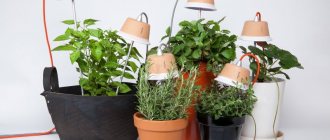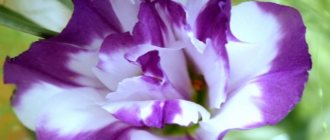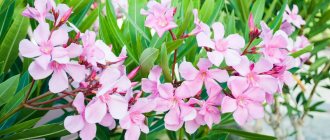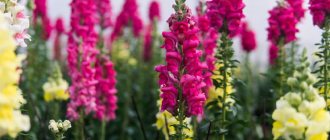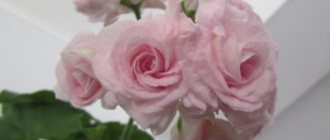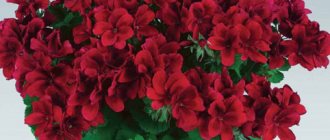Grevillea plants is quite large and is directly related to the Proteaceae family. It brings together approximately 370 plant species that can be found in nature in most cases in Australia. Only 5 species of this genus are found in other parts of the globe, namely on the islands of New Guinea, Sulawesi, and New Caledonia.
Plants of this genus are represented by evergreen creeping or erect shrubs, most of which are quite small in size (about half a meter). There are also quite large trees, the height of which can be more than 30 meters. The surface of the cylindrical shoots has a grayish and rather smooth bark. The alternate leaves are in most cases short-petioled. The shape of the foliage can vary significantly among different species. Tubular flowers can be either single-petaled or separate-petaled. Despite their small size, they form fairly large inflorescences in the form of racemes, as they have very long pistils.
Botanical description
Grevillea is a perennial evergreen plant of the Proteaceae family.
It grows in the form of a shrub or large tree (height up to 35 m), when grown indoors it is limited to a height of 2 m. The interest of flower growers in grevillea is caused by the structure of the leaves. Each leaf is elliptical in shape and simple. Alternately attached leaves make up a leaf plate up to 30 cm long. In general, it resembles a fern frond or thuja needles. The reverse side of the leaves is covered with fine hair, which gives the surface a silky feel. The leaves are soft to the touch and their color is deep green.
Grevillea blooming
How grevillea blooms photo
Grevillea flowers look like long narrow tubes. They gather in large spike-shaped or racemose inflorescences. Flowers can be white, but bright shades predominate (pink, orange, red). By the way, thanks to the sweet nectar, the flowers of certain types of grevillea were eaten by local residents.
Where is it found?
Most types of grevillea are common in the tropics of Australia, some can be found on the islands of New Guinea, Caledonia, Sulawesi, and the Moluccas. Focusing on tropical origin, it is necessary to create appropriate conditions for indoor cultivation: bright lighting, warmth, high humidity.
Grevillea is a flowering plant, but blooms extremely rarely at home. Most often, grevillea is grown as a decorative foliage tapeworm in bright, cool rooms.
The first description of grevillea dates back to 1809, and the name of the plant was given in honor of Charles Greville (English botanist, member of the Royal Society).
Grevillea how to grow and propagate a plant at home
Grevillea is a member of the genus of flora belonging to the Proteaceae family, which includes dicotyledonous plants with two oppositely growing cotyledons in the embryo. The largest distribution area of grevillea is on the lands of the Australian continent, the islands of New Guinea, New Caledonia and also the territory of the Indonesian island of Sulawesi. This genus includes up to two hundred varieties. The plant was first described at the beginning of the 19th century (in 1809) and the term “Grevillia” was chosen to define it. The flower owes this name to the Honorable Sir Charles Francis Greville (1749–1809), who was a famous British antiquarian, botanist, collector and politician. This prominent figure was also a member of the Royal Society and the Linnean Society of London, engaged in research into the classification of representatives of the planet's flora. This exotic inhabitant of the subtropical regions of the planet is an evergreen flowering plant that can also take on both shrubby and tree-like forms. Their height can vary from half a meter of shoots of shrubs bending towards the soil surface to thirty-five-meter giant trees in its homeland. However, in indoor conditions, the branches can reach only 2 meters in height, especially if the plant is kept cool and with sufficient lighting.
Grevillea leaf blades can grow either attached to petioles or completely sessile. The shape of the foliage is also quite varied: it can be a simple leaf or deeply double pinnately dissected. The edge of the leaf is either smooth or curved, resembling large teeth. There is also venation along the surface, which varies from a reticulate to a parallel arrangement. The color also varies greatly among each variety: it can be forest green, changing to greenish-bronze or even silver. Moreover, the shade of the foliage directly depends on the lighting conditions when growing grevillea. Due to the glossy surface on the leaf blades, the beauty of the plant is enhanced as they look shiny and very fresh. Some compare the luxurious foliage of this flora specimen with fern fronds (pinnately dissected leaves). If the plant is grown indoors, flowering is observed quite rarely. Usually the flower is bisexual, with a tubular outline, in which the perianth and long style lobes are twisted. The color of the petals of the buds can take on red, pinkish or yellow and orange-red shades. The inflorescences have racemose or bunch-shaped outlines, the number of flowers from which they are composed is also varied. Because of its effective appearance, grevillea is best grown as a solitaire crop for large rooms, halls, lobbies, and the like. The most favorite variety among flower growers is the variety of Grevillea powerful, which on its native Australian continent is called “silky oak”, since the leaf lobes have a delicate pubescence. The growth rate of this “pinnate” beauty is very high, so careful pruning of the crown is required. In terms of difficulty of care, the plant is moderately complex, since when growing it will be necessary to provide special conditions during the dormant period and few growers will be able to maintain them.
Conditions for growing grevillea
Illumination
Grevillea needs bright, diffused light throughout the year. Daylight hours should be 10 hours. During the period April-September, protect the plant from direct sunlight. The best option is to place the grevillea on a windowsill facing east or west while it is “small”. Move a large plant to the floor and place it near a south window; with sufficient lighting, it can be grown in the back of the room.
In autumn and winter, additional illumination with phytolamps or fluorescent lamps will be required.
Temperature
During the spring-summer period, keep the air temperature moderate, in the range of 19-24 °C. In winter, you will need coolness: the temperature is within 6-12 °C (we transfer the grevillea to a glazed balcony).
Staying in the fresh air has a beneficial effect on the condition of the plant. As soon as real warmth sets in, move the grevillea into the garden or onto an open balcony, but the place should be protected from direct sunlight and strong gusts of wind.
Watering and fertilizing
Although it tolerates periods of prolonged drought very well, it is recommended to water the shrub regularly during vegetative regeneration and in the summer and only when the soil is completely dry.
In the fall, dig a large amount of aged manure or a handful of slow-release granular fertilizer at the base of the bush.
Caring for grevillea at home
How to care for grevillea at home
How to water
Water your grevillea regularly throughout the spring and fall. At this time, the top layer of soil should dry out between waterings. By the end of autumn, watering is reduced to moderate. In winter, as the temperature drops, it is strictly forbidden to allow waterlogging. Water occasionally so that the earthen ball does not dry out completely.
Air humidity
The plant needs fairly high air humidity. During the warm season, spray grevillea regularly. Periodically place it on a tray with damp moss, pebbles or expanded clay, but the bottom of the container should not come into contact with the surface of the water.
For spraying and watering, softened water (rain, melt, filtered or settled for at least a day), warm, is required.
Trimming
Grevillea is growing rapidly. To limit its growth and form a compact bush or tree, it is necessary to carry out regular pruning. In the spring, shorten the shoots by 1/3 of their length, and also trim off branches that have dried out and are out of character.
Feeding
From early spring to mid-autumn, grevillea at home needs to be fed. Use complex mineral fertilizers for decorative foliage plants. Feed once every 15 days.
Features of transplantation at home
Until the age of three years, grevillea must be replanted annually. Replant adult plants approximately once every 3-4 years; when grown in a tub, as the tub rots. For adult plants, it is necessary to change the top layer of the substrate annually (carefully remove it to a depth of 5 cm). Replant or replace the substrate in early spring before growth begins.
Each time you replant, slightly increase the diameter of the container. The pot should not be deep; in such conditions grevillea does not develop well.
Be sure to lay a good drainage layer at the bottom of the container, consisting of expanded clay, pebbles, clay shards, and pieces of polystyrene foam. The soil requires loose, nutritious, neutral or slightly acidic reaction. It can be prepared on the basis of 2 parts of coniferous soil, with the addition of 1 part of leaf soil, peat and ½ part of coarse sand, also add brick chips for looseness.
Once the drainage is in place, add a layer of fresh soil into the container. Carefully remove the grevillea from the previous pot and lightly shake off the soil from the roots. If rot is detected, it is necessary to cut off the affected areas and treat the cut areas with a fungicide. After this, place the grevillea in the center of the new container, add the substrate, then press it with your palms on the surface around the stem. Water it a little and move it to a slightly shaded place for a couple of days to adapt.
Wonders of Botany: Crystal Flower (Grey's Twofoil)
We Russians are accustomed to the fact that exotic plants grow somewhere far away, “at the ends of the Earth,” in Africa, on the islands of the Indian Ocean, in North America. But amazing, simply fantastic plants can be found in various regions of our country. For example, in the Far East there grows a very unusual plant - Gray's bifolia, which is also known as the “crystal flower”.
Description of the plant
Bifolia are perennial herbaceous plants that belong to the Barberry family. This is a fairly small genus. It includes only three types:
- North American – corymbose bifolia;
- “resident” of East Asia - Chinese bifoil;
- Far Eastern - Gray's bifolia.
It is the latter variety that grows on the territory of our country: on the islands of the Kuril chain (Iturup, Kunashir), on Sakhalin. It can also be found in China and Japan (on the islands of Honshu and Hokkaido).
It grows in birch or coniferous moist forests and is very rarely found in the wild. Gray's bifoil is listed in the Red Book. Its flowering lasts only a few weeks (3-4), but its beautiful appearance makes it decorative throughout the entire growing season. Largely due to this, Russian gardeners, gardeners, summer residents, and lovers of exotic plants have recently begun to become interested in them.
The Latin name for the flower is Diphylleia. It is formed from a combination of two Greek words (dio, which means two, and phyllon, translated as leaf) and is explained by the structural features of the plant: on two long petioles (up to 20 cm) there are two large shield-shaped leaves, reaching a width of 50 cm and having palmate veins (from 7 to 9 pieces). There is a slight edge on the bottom of the leaf blade. The leaves are arranged in the same order. Usually the first leaf is larger than the second.
The plant has a very tangled thick rhizome, which is located horizontally under the surface of the earth at a depth of no more than 3-6 centimeters. If you look closely, you can see small scars on the surface of the root of an adult plant. These are traces of outdated and dead shoots. By counting their number, you can determine the age of the bifoil.
In the second half of May - early June, the plant throws out an arrow, the height of which can reach 1.5-2 meters. At the very top of the peduncle there is a thyroid inflorescence with a diameter of 6-8 cm, consisting of 8-12 buds, sometimes up to 30. Over time, they turn into small white flowers with 6 sepals, 6 flat petals and 6 bright orange stamens. The flowers are quite small, the diameter of each does not exceed 2-2.5 cm. After opening, they emit a pleasant aroma, similar to the smell of rose hips.
After flowering is completed, small berries form in place of the flowers. In July-August they ripen, acquiring a dark blue, slightly bluish color. The juicy berries look like grapes. Inside each there are 6-9 pear-shaped seeds. in autumn the above-ground part dies off completely, leaving behind another scar on the rhizome.
The secret of the “crystal flower”
Gray's bifoil is decorative throughout the growing season. Not only its leaves and flowers look original, but also its spectacular blue berries, reminiscent of grapes. Therefore, a plant planted in the garden will decorate it all summer. However, in the wild, in a coniferous forest, you can pass by and not notice it, but it has its own secret, thanks to which it is sometimes called the “crystal flower.” In America it is known as Umbrella-leaf. In some countries it is called Skeleton Flower.
What is so surprising about this seemingly completely ordinary flower? When water (rain or regular water from a garden watering can) falls on the petals of the inflorescence, they lose their white color and become absolutely transparent like glass, so transparent that you can see green leaves through them. As the water dries, the petals return to milky white.
The nature of this amazing phenomenon has not yet been solved by either biologists, physicists, or chemists. There are several assumptions; it is impossible to say how fair they are. According to one version, a chemical reaction occurs between the surface of the leaves and water, which leads to the thinning of the petals so much that they become like the thinnest plastic film. Another theory suggests the electrical nature of this process.
In your own garden, you can see the unusual effect yourself or surprise your neighbors with it almost at any time during the flowering period of Gray's bifoil. To do this, just lightly spray the petals from a spray bottle or plastic bottle. If weather conditions permit (sufficient level of illumination), then it is quite possible to film what is happening on a video camera, smartphone, and then post it for public viewing on the Internet.
Growing in the garden
Diphylea is a wild plant that has not yet been cultivated by humans. But, despite this, it can be grown in your own garden, on your personal plot, used to decorate flower beds, front gardens, and used in landscape design.
Caring for bifolia
In the wild, it chooses moist places, sheltered from bright sunlight, therefore, in the garden for its cultivation, places should be allocated in the shade, partial shade, in the garden among the trees, away from scorching rays. Despite the fact that the plant has fairly large leaves, they are very fragile and strong gusts of wind can easily damage them. Therefore, areas protected from wind and drafts should be allocated for planting bifoil.
The flower has recently begun to be cultivated in gardens, so it grows well even without additional fertilizer, especially on fertile, loose soils. The only thing it needs is regular watering. It is recommended to do it every other day. However, you can reduce the frequency of watering to once a week by pouring at least a bucket of water under each root. To do this, the ground under the bushes is mulched with straw, sawdust, and peat, which will reduce the evaporation of moisture from the soil surface.
The plant is practically not affected by insect pests and diseases. But for preventive purposes, bifoil must be treated with special pest control agents 1-2 times during the growing season. Sometimes young plantings are “attacked” by snails and slugs. They are collected by hand, and to prevent new attacks, the ground in the hole and around the plant is sprinkled with sharp expanded clay.
Planting and caring for grevillea in open ground
Grevillea juniper in open ground cultivation and care
When to plant
Grevillea is planted in the garden in early autumn, this is the ideal time for successful rooting. Spring planting is also allowed, but with frequent watering until the plant takes root.
Priming
Prefers sunny areas, partial shading is allowed. The shrub develops well in depleted, well-drained, acidic and neutral soils. Does not tolerate flooding and stagnant moisture.
Watering
Caring for grevillea is not difficult: if there is precipitation, there is practically no need to water, especially if the plantings are mulched with any organic residues: grass clippings, straw, sawdust or pine needles. However, during periods of severe drought you will need to water sparingly.
Trimming
The shrub tolerates pruning well, so it can be used to create a hedge or give it any shape you wish.
Top dressing
The plant does not require large amounts of nutrients in the soil. Ordinary garden soil will provide the bush with everything it needs. There is no need to feed grevillea. Provide a layer of mulch of about 10 cm, which will become a natural top dressing.
Wintering
Grevillea tolerates short-term temperature drops down to -12°C, but with prolonged exposure to temperatures below -10°C it is prone to freezing. In the southern regions, wintering in the garden is allowed, but provided there is good shelter. In the middle zone, plants are transferred to flowerpots and stored in a cool room with good lighting until spring, with infrequent watering.
Kinds
Large grevillea
Otherwise - powerful grevillea. Feathery leaves are characteristic of this herbaceous plant, which resembles a fern, at least upon casual inspection. A more detailed analysis of the plant reveals its characteristic features, in particular:
- Beautiful long grevillea leaves that stretch 30 centimeters or more.
- The amazing cross-section of lobes on the leaves amazes with its neatness and makes you want to buy this plant.
- The tones in which grevillea is painted vary from a noble green tint to silver.
- As it grows, the colors of the grevillea may change to darker or lighter. This process depends on the level of light and your approach to the flower.
- The light gloss that covers the foliage only increases the visual merits of the plant. But, unfortunately, you won’t get a flowering indoor plant.
- Grevillea flowers will bloom only in open ground, which will please owners of land plots and greenhouses.
Grevillea Banks
In addition to this famous variety, there are others, less known, but no less beautiful. In particular, Grevillea Banks, which is famous in narrow circles for its flowers. Small shoots look down, the whole plant has a somewhat dejected appearance, which, however, does not depress its owner. The average length of shoots is 20 centimeters; Grevillea Banks is slightly smaller than the powerful variety. Bright, as if alien, buds emit an excellent aroma that adds sophistication to the flower.
Diseases and pests
Grevillea is extremely resistant to diseases and pests.
Difficulties arise from improper care. So, with insufficient watering and dry indoor air, the tips of the leaves dry out. Overmoistening of the soil (especially in combination with low temperatures) causes rotting of the roots, so follow the watering schedule and do not forget about drainage.
It is extremely rarely damaged by whiteflies. On the reverse side of the leaf blades you can see small whitish insects and their larvae. First, bathe the plant in a warm shower, then treat it with an insecticide (experienced gardeners recommend using the drug Actellik).
Possible problems
When growing grevillea indoors, you need to remember that if it is poorly cared for or has unsuitable conditions for growth, problems may arise with it. For example:
- Slow growth. Either the wrong substrate was used for planting, or the bush experiences an acute lack of nutrients. In this case, they begin to add fertilizer to the substrate twice a month, and in the spring, be sure to replant the flower in a fresh soil mixture.
- All the leaves have fallen off. This happens due to too little watering or when the lump of earth in the pot is too dry. Immerse the flower in a container of water at room temperature and remove it after half an hour.
- The foliage turns yellow. This can happen if the bush is kept warm in winter rather than in a cool place.
- Spider mite. It prefers warmth and low humidity. To exterminate the tick, the bush is washed under a warm shower and then systematically moistened with clean water from a spray bottle.
- Whiteflies. Such small pests, similar to whitish moths, are very dangerous for grevillea. To get rid of them, the plant is repeatedly treated with an insecticide solution.
Growing grevillea from seeds
Grevillea seeds photo
Fresh seeds have excellent germination rate (about 80%), after storage the germination rate drops (to about 30%). Germination can be stimulated by soaking in warm water or a growth stimulator solution. Sowing should be carried out in the period January-March.
- Sow grevillea in any shallow container (bowl, pot, plastic or wooden box).
- To grow grevillea from seeds, you will need a substrate consisting of leaf, turf, humus soil and sand in a ratio of 1x0.5x0.5x1 parts.
- Carefully plant the seeds to a depth of 0.5 cm as little as possible (you can press the furrows with the edge of a ruler), spray the crops with a fine spray and cover the top with glass or transparent film.
- Maintain bright, diffused lighting; the temperature will need to be between 18-20 °C.
- Do not forget to raise the shelter daily for ventilation, and if necessary, moisten the soil surface by spraying with a fine spray.
- When sprouts appear, the cover can be removed.
- At the stage of appearance of a pair of true leaves, thin out the seedlings, leaving a distance of 2-3 cm between them.
- Grow seedlings in good light and water moderately.
- When they grow up, plant them in separate pots with a diameter of 7 cm.
- Prepare the soil mixture from equal proportions of turf, leaf and humus soil, sand and peat.
- Young plants must be protected from direct sunlight.
- Also ventilate the room regularly, but avoid drafts.
Reproduction - step by step instructions
The life form of grevillea is an evergreen bush or tree with many fast-growing shoots and requires periodic pruning. The plant is viable and easily propagated by cuttings or seeds.
Cuttings
To propagate an ornamental bush, you need to choose strong, woody shoot tips. The most suitable time for this procedure will be August. To get a healthy plant with exotic leaves, you need to correctly divide the shoot into cuttings.
- The most suitable for cuttings is the part of the stem that has begun to become covered with a woody layer;
- Using a sharp knife, cut off the selected shoot, the length of which is 15-20 cm;
- It is necessary to cut off the upper green part of the shoot;
- Divide the remaining cutting into parts so that at least two nodes (dormant buds) remain on each.
- It is better to remove the green part of the leaves, since a lot of moisture evaporates through the leaf blade.
- The cutting responds gratefully to the treatment of the lower part with root.
- The shoot, treated with a growth stimulator, is planted for rooting in a container filled with a mixture of turf soil and river sand and covered with a transparent jar or bottle to create greenhouse conditions.
REFERENCE. A node is the place on the cutting from which a leaf grows, and the distance between the nodes is called the internode.
Seeds
The seeds of this luxurious plant with lacy spreading leaves look like large brown grains. They quickly lose their viability, so you need to carefully monitor expiration dates and use only fresh material.
- Grevillea seeds can be planted in mid-February in a shallow container.
- The soil should consist of a mixture of turf and leaf soil with river sand. Seeds should be sown to a depth of 1 cm.
- To ensure better germination, water the sown grains with warm water.
- To germinate grevillea seeds, you need to choose the warmest place in the room and place the bowls there.
- After the sprouts appear, the young shoots need to be moved to a well-lit, warm place.
- After the second leaf appears, the sprouts can be planted in small pots with a diameter of 10 cm.
Propagation of grevillea by cuttings
How to cut grevillea photo
- Cut cuttings from semi-lignified shoots of the current year.
- Start vegetative propagation around the end of August.
- The length of the cutting should be about 7-10 cm.
- Root in a sand-peat mixture (1 to 1) or clean sand.
- It is advisable to treat the cuttings with a solution of a growth stimulator or, before planting, dip a wet cutting in the powder of a rooting stimulator.
How to root grevillea cuttings photo
- Plant the cuttings (you can make holes with a stick and plant them there) and water them, cover the top with glass or oilcloth, you can cover each cutting individually with a cut plastic bottle or glass jar or glass.
- Cuttings can be planted in seedling cassettes with large cells.
Grevillea cuttings photo
- Place the container with the cuttings in a warm place (about 20 °C) with diffused lighting.
- Raise the shelter daily for ventilation and water it periodically.
- When the cuttings take root, new leaves will appear. This means that you can already plant them in separate containers with a diameter of about 7 cm.
- Use the same substrate as for replanting young plants grown from seeds.
Types of grevillea with photos and names
About 370 species of grevillea are found in the natural environment, some of them have been cultivated.
Woolly Grevillea Grevillea lanigera
Grevillea woolly Grevillea lanigera photo
A resident of South Australia, this beauty has become a favorite of flower growers around the world. The plant became popular due to its exotic appearance and relatively low height. The shrub is quite variable, and different varieties grow from 30 to 1.5 cm in height.
Of particular interest are the leaves with tomentose pollination, which gives the plant a slightly fairy-tale appearance. The flowers are massive, located at the edges of the branches, and resemble giant spiders.
The plant tolerates light frosts, so residents of regions with moderate winters (frosts down to -12°C) can easily grow woolly grevillea in the garden and leave it there for the winter.
Grevillea juniperina Grevillea juniperina
Grevillea juniper Grevillea juniperina Grevillea juniperina Grevillea juniper photo
The name of the species was obtained due to the external resemblance of the leaves to juniper. Flowering is abundant, flowers with long red stamens are crowned with large yellow anthers, giving the plant an enchanting appearance, reminiscent of fireworks on a dark green background of bright foliage. The flowers are also orange and yellow. The plant is very elegant and can decorate a summer garden, greenhouse, or the interior of residential and public buildings.
Plants of this genus reach a height of 20 cm to 3 m. They prefer clay and loamy soils. It blooms from winter to early summer, some species bloom from September to February. This is an erect shrub, the inflorescences are located at the tips of the branches, sometimes in the axillary buds. Excellent propagation by seeds.
Alpine Grevillea Grevillea alpina
Alpine Grevillea Grevillea alpina photo
It is a low-growing (about 1 m high) well-branched shrub. The shoots are densely covered with soft felt pubescence. The leaves are narrow, elliptical in shape, have blunt tips and slightly curled edges. The surface of the leaves is dark green, with pubescence on the reverse side. Inflorescences appear on the tips of the shoots. The oblong tubular flowers are collected in bunches of several pieces, forming a panicle. The base of the flowers is reddish and the tips are yellow.
Grevillea banksii
Grevillea banksii photo
Shrub or tree up to 5 m high. Leaf blades reach a length of 10-20 cm, they consist of 4-10 lobes. The leaves are oblong, smooth edges with pointed tips. The surface of the leaves is glossy, dark green in color, the reverse side of the leaf is slightly pubescent with orange hair. The peduncle and perianth are also covered with dense but barely noticeable hairs. Racemose inflorescences “burn” with a bright red hue.
Grevillea powerful or large Grevillea robusta
Grevillea powerful Grevillea robusta photo
The species is better known as silk oak - a tree 24-30 m high with a spreading crown. In the natural environment, these beauties are found in Australia (forests of Victoria) and New Wales. Branches and shoots appear grayish due to pubescence. The leaf blades are double pinnate, the length of each segment is 15-20 cm.
The leaves are lanceolate-shaped with jagged edges. The surface of the leaf is bare, green, the underside is slightly pubescent and has a yellowish tint. Racemose inflorescences consist of bright orange flowers. When grown at home, the size is more modest (height is 2-3 m), flowering occurs extremely rarely.
Grevillea rosmarinifolia
Grevillea rosmarinifolia photo
A spreading shrub 1.5-2 m high. The leaves are oblong, narrow, needle-shaped. They thickly cover the shoots, resulting in something like a Christmas tree. Tubular flowers of a white-red hue are collected in racemes.
Varieties
2.1.Grevillea large or robusta - Grevillea robusta
In its natural habitat it is a tall, fast-growing, evergreen tree up to 40 m with an elongated crown. The plant has very attractive, complex, dissected leaves. The surface of the leaf blades is glossy, green, the underside is often painted in a lighter shade. During the flowering period, the plant abundantly forms oblong inflorescences with many petalless flowers with long, orange-red stamens.
An interesting feature of the plant is that it loses some of its leaves before flowering.
2.2.Woolly Grevillea - Grevillea lanigera
Extremely spectacular and at the same time compact shrubs with a thick, spreading crown formed by abundantly branched, long shoots. The leaves are narrow, linear, reminiscent of needles, reaching a length of 1 - 3 cm, colored green or bluish-green, densely covering the stems. During the flowering period, the plant decorates itself with small apical inflorescences consisting of red, pink or crimson flowers.
2.3. Banks' Grevillea - Grevillea banksii
A tall, spreading flowering shrub or a low, evergreen tree up to 7 m with thin, graceful branches. The leaves are complex - made up of many linear, green segments. In spring and summer, cylindrical inflorescences with many pink, red, and less often white or cream flowers with long, curved and fluffy stamens appear at the tops of the shoots.
2.4.Grevillea rosmarinifolia
Small evergreen shrubs with a rounded, lush crown up to 2 m high. Dark green or bluish green, needle-shaped, pine-like leaves have a glossy surface and abundantly cover the plant stems, reaching a length of 1 - 4 cm. Bright pink or cream flowers appear on the plant in spring or summer in small apical inflorescences.
2.5.Juniper Grevillea - Grevillea juniperina
A spectacular shrub with thin, long, horizontal branches. The leaves are light green, glossy, needle-shaped. This variety has very varied flower colors - they can be white, cream, yellow, orange, pink or red.
You might also be interested in:
Jacaranda
Cattleya
Codeium
Pisonia
